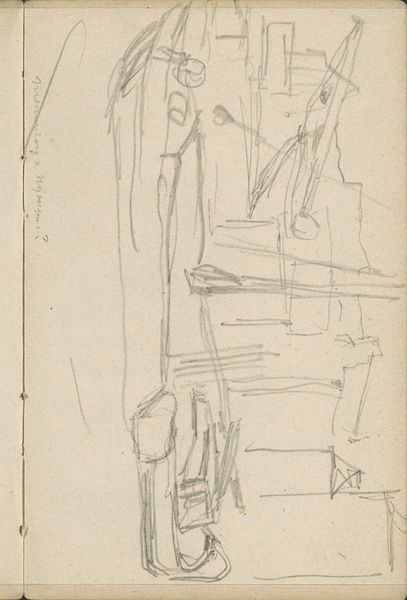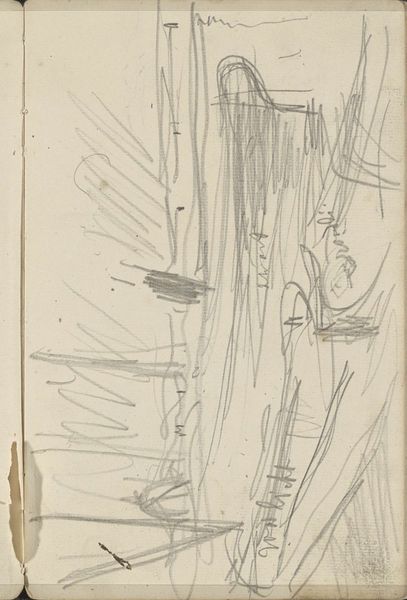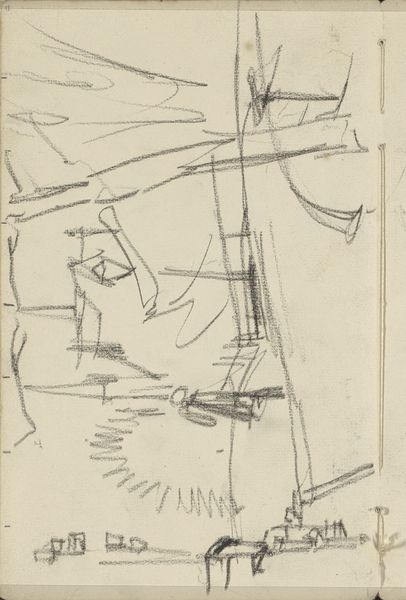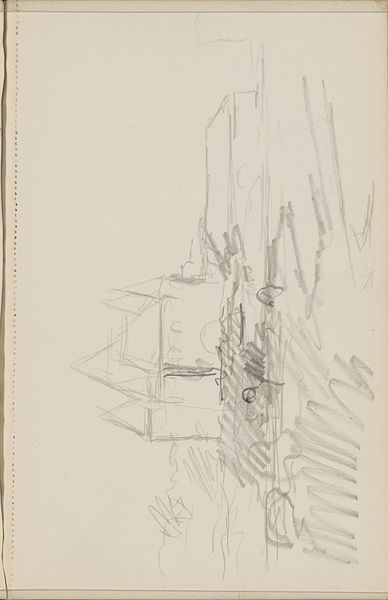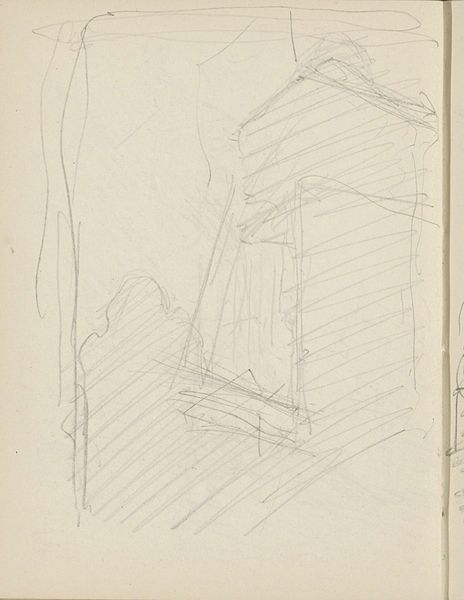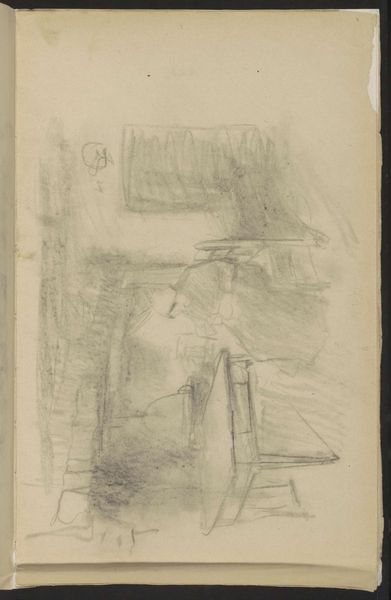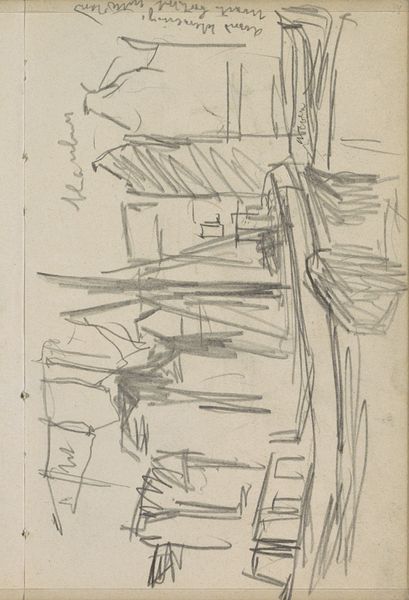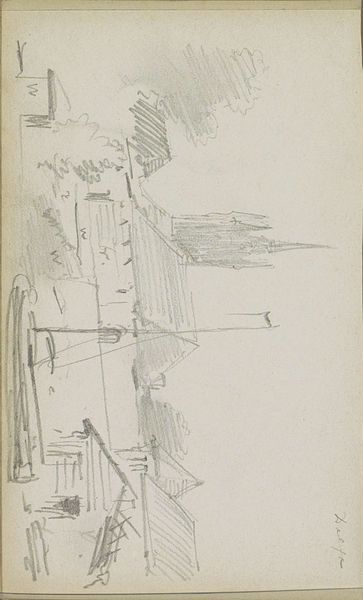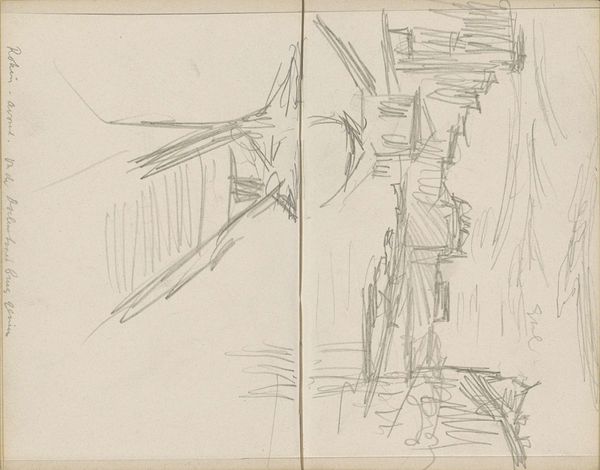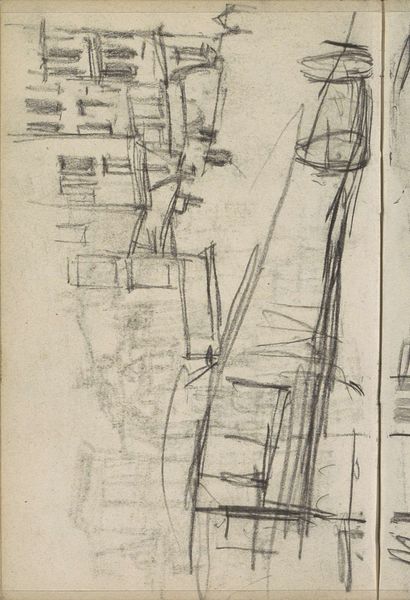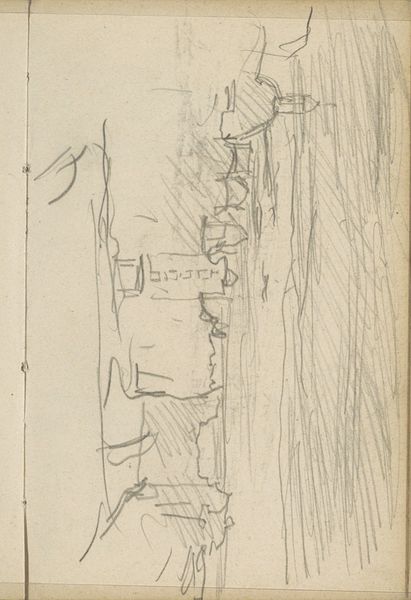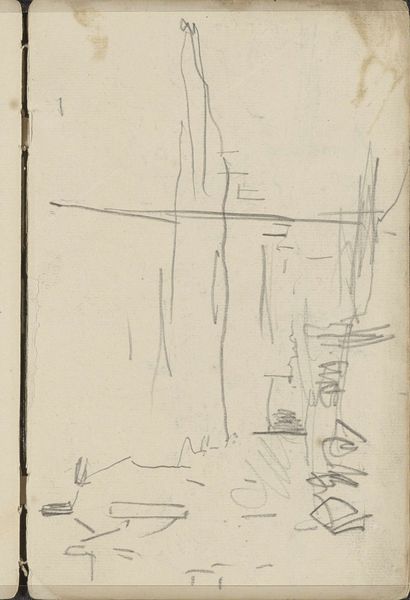
#
amateur sketch
#
light pencil work
#
incomplete sketchy
#
personal sketchbook
#
idea generation sketch
#
ink drawing experimentation
#
pen-ink sketch
#
sketchbook drawing
#
sketchbook art
#
initial sketch
Copyright: Rijks Museum: Open Domain
Curator: Hmm, chaos, maybe? A scribble of captured movement? Editor: This is a sketch titled "Aangemeerde boot, mogelijk een schuit" – “Moored boat, possibly a barge” – created sometime between 1886 and 1923 by George Hendrik Breitner, held here at the Rijksmuseum. The medium appears to be pencil on paper. Curator: It's so…unfinished. A ghost of a boat. Breitner caught it like a thought drifting away. Is that even a boat? It's a beautiful mess. The eye doesn't quite know where to settle, does it? I like that feeling. Editor: This reminds me of the role of sketches in the development of artistic projects, and their intimate value as exploratory works, particularly considering Breitner's wider oeuvre capturing Amsterdam street life and labour. One could ponder on what specific meanings barges and boats carried for harbour communities in the Netherlands, and what function this work fulfills as a preparatory exploration. Curator: You know, seeing it like this, as prep, I almost like it more! I imagine Breitner here, just grabbing this snippet of dockside life. Not trying to immortalize the barge, just to…feel it, you know? I feel like I can actually glimpse his thinking in the pencil strokes. It is, in that sense, far more spontaneous than more accomplished works. Editor: Right, this piece challenges notions around completion and the canon. I wonder, though, how does an artist decide which sketches have value, deserve preservation? So many, likely, get lost. Whose stories are not being preserved as a result? Curator: Perhaps, the "imperfect" artworks allow future viewers to access a deeper layer of honesty and the vulnerability in creative pursuit. I suppose those are my favourite aspects. It also asks "Who is art for?" The final product is certainly intended for more widespread appreciation, while the early sketchbook stages could arguably have value for its creator above all else. Editor: I agree. This makes me think about visibility, about who gets remembered, what art gets prioritized in archives and collections like the Rijksmuseum—and why that matters today. Curator: Well, it definitely gives you something to mull over, doesn't it? A sketch, a question mark, a bit of a puzzle, just like life, I think. Editor: Absolutely. This small drawing holds big implications when considering the narratives around artmaking itself, questioning the art we see versus that which has been deemed secondary and disappears from sight.
Comments
No comments
Be the first to comment and join the conversation on the ultimate creative platform.
